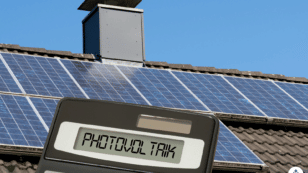 Reviews
Reviews
Rhode Island Solar Incentives (Rebates, Tax Credits & More in 2024)
Converting your home to solar energy can be expensive, but there are a number of solar incentives in Rhode Island that can help reduce your costs. In this guide, you will learn:
- What solar incentive programs are available in Rhode Island?
- How much can you save by taking advantage of these programs?
- Which solar incentives in Rhode Island give you the best return on investment?
Each product and or company featured here has been independently selected by the writer. You can learn more about our review methodology here. If you make a purchase using the links included, we may earn commission.
Do Rhode Island Solar Incentives Make It Affordable for Homeowners to Go Solar?
Yes, solar incentives in Rhode Island make it significantly cheaper to convert your home to a photovoltaic (PV) system.
Going solar is a particularly good idea for homeowners in Rhode Island. The Ocean State has some of the highest electricity prices in the country – and some of the most favorable solar policies in the U.S. It’s also unusually affordable to install a new solar power system: The average cost for a Rhode Island homeowner is $22,080, much lower than the national average.
To defray that cost, Rhode Island offers numerous incentives that help you save money.
That’s primarily thanks to the state’s aggressive Renewable Energy Standard, which sets goals for how much clean energy Rhode Island hopes to produce.

Green Power Energy

Regional Service
Average cost
Pros
- Educational, no-pressure sales approach
- Outstanding customer service
- Multitude of products and services
Cons
- Relatively young company

Blue Raven Solar
Pros
- Industry-leading in-house financing
- Competitive pricing
- Excellent reputation
Cons
- Doesn't offer solar batteries (coming 2022)

Trinity Solar

Regional Service
Average cost
Pros
- Many financing options
- Family-owned and -operated
- Makes charitable contributions
- Relatively short workmanship warranty
Cons
- Limited service area
Here is an overview of all the available solar incentives in Rhode Island. We also include an estimate of how much they can save you.
| Solar Incentives in Rhode Island | Incentive Type | Description | Occurrence | Estimated Dollar Amount You Can Receive |
| Federal Solar Investment Tax Credit (ITC) | Federal | Credits 30% of your entire system price to your income tax burden for the tax year your system is commissioned | One time: Gets applied when you file your taxes for the year your system is installed | $6,624 on average, based on typical PV system costs in Rhode Island |
| Rhode Island Renewable Energy Fund (REF) grants | State | Grants for renewable energy projects that have the potential to produce electricity in a cleaner, more sustainable manner | One time: Applied when you purchase your solar power system | Varies based on system size, type and value. |
| Rhode Island Renewable Energy Growth (REG) program | State | Enables customers to sell their generation output from renewable energy sources under long-term tariffs at fixed prices | Ongoing: Revenue generation from generated energy over 15-20 years. | Varies based on system size. |
| Rhode Island Property Assessed Clean Energy (C-PACE) Financing | State | Affordable and accessible solar loan options that add your monthly payments to your tax bill | One time: Gets applied when you qualify for the program before you install your system | Varies based on your system size, your monthly energy bills prior to converting and more |
| Sales Tax Exemption for Renewable Energy | State | Waives all sales tax on PV equipment, including panels, inverters, batteries and more | One time: Gets applied when you purchase your system | $1,545 on average in Rhode Island |
| Property Tax Exemption for Renewable Energy | State | Prevents your property taxes from going up after installing PV equipment, which normally raises your property value | Ongoing: Your system value is left out of your home’s assessed value every year your property taxes are assessed | Varies based on your system value, your home value and your county’s tax rate. |
| Net Metering and Virtual Net Metering | Local | Lets you earn credits with excess solar energy that can pay down future utility bills. Virtual Net Metering applies even when the system isn’t located on the customer’s property | Ongoing: Always in effect | Varies based on your system size, your monthly energy bills, your energy consumption and more |
What Do Rhode Islanders Need to Know About the Federal Solar Tax Credit?
The federal solar investment tax credit (ITC) is one of the most substantial financial incentives available for PV systems in Rhode Island. It’s offered by the federal government and is available to all Rhode Island homeowners.
The federal credit can be worth up to 30% of your entire system cost. In Rhode Island, where residents pay an average of $22,080 for an average 6 kilowatt (kW) system, the credit amount comes out to around $6,624.
This amount gets applied to the income taxes you owe for the year your system is installed. If you can’t take the full credit that year, you can roll over any remaining credit for up to five years. That means you’d have to owe an average of $1,324 per year for five years to be able to take the entire credit.
We should also note that the ITC applies to all solar equipment, including panels, EV chargers and batteries. We mention this because we believe the future holds a downgrade or abandonment of the net metering program in Rhode Island, which would mean installing batteries would maximize savings and might be the only way to see net savings over time. Batteries add between $10,000 and $20,000 to your installation costs, which means the ITC could be worth an additional $3,300 to $6,600 over the current average.
The federal credit was originally offered in 2005 according to the following rate schedule:
- 30% of the system value for systems installed between 2005 and 2021
- 26% of the system value for systems installed in 2022
- 22% of the system value for systems installed in 2023
- 0% of the system value for systems installed in 2024 and beyond
Thankfully, the credit was extended in 2022 and increased back up to 30%. It’s now available according to the following rate schedule:
- 30% of the system value for systems installed between 2022 and 2032
- 26% of the system value for systems installed in 2032
- 22% of the system value for systems installed in 2033
- 0% of the system value for systems installed in 2034 and beyond
How to Claim the Federal ITC in Rhode Island
The federal credit provides a massive benefit for many solar customers, and filing for it takes just a few minutes and minimal effort. You can follow the simple steps below to make sure you take advantage of this perk.
- Step 1: When it’s time to file your taxes for the year your system was installed, go to the IRS’s website and print out form 5695.
- Step 2: Fill out the form. You’ll need the contact information for the Rhode Island solar panel installation company you hired to install your panels, and you’ll also need some basic information about what equipment was installed on your home. You may need to reach out to your solar company for the system size and value.
- Step 3: File the IRS form when you file your taxes or have your accountant file it for you.
If you use tax software like HR Block or TurboTax, the program should automatically prompt you for information about your solar conversion. Just report that you did install solar, and the software will ask you for all of the pertinent information instead of having you go to the IRS’s website.
EcoWatch’s Opinion on the Federal ITC in Rhode Island
The federal credit is one of the most helpful incentives available in Rhode Island. If you only take advantage of one program, we hope it’s this one. Filing for the federal credit takes just a few minutes, and it provides an average value of over $6,624 – making it well worth your time.
Just keep in mind that the federal credit is not a rebate, so you’re not guaranteed to get the entire amount back. Instead, the credit amount gets applied to any income tax that you owe, which means if you don’t owe money on your taxes, you won’t be able to take the credit.
If you owe a portion of the credit, your tax liability should drop to $0, and the remaining credit will roll over for up to five years. As such, you’ll only be able to take the full credit if you expect to owe at least $1,324 per year in income taxes, or $2,562 per year if you also include batteries with your system installation.
Watch Below: Learn What To Know Before Going Solar in Rhode Island
Rhode Island Renewable Energy Fund (REF) Grants
Rhode Island offers grants for renewable energy projects that have the potential to produce electricity in a cleaner, more sustainable manner. The program is intended to stimulate job growth in the green technology and energy sectors and expand the role of renewable energy throughout the state.
Funded by the state commerce department, the REF grants help offset the cost of a new solar energy system that will be connected to the electricity grid. The size of the grant varies based on your system type and size – within a range of $5,000 to $75,000. Typically, the grant money is sent directly to your solar power installer, reducing the amount you have to pay out of pocket.
How to Claim Rhode Island Renewable Energy Fund (REF) Grants
Claiming the REF grant is simple, since your solar installer will typically handle most of the process. Below are the steps in applying for a REF grants:
Step 1. Your Rhode Island solar installer applies for the grant on your behalf.
Step 2. The REF team reviews the application. If the project meets all requirements, an Award Letter is created and sent to the installer.
Step 3. The installer submits the documents listed on the Award Letter to the REF office.
Step 4. The office creates a Grant Agreement, a legal binding document stating that the funds for your project have been allocated.
Step 5. The system is then installed on your home, and your installer submits another set of documents to the REF office.
Step 6. An inspection team inspects the system, following which the grant amounts are released to the customer.
EcoWatch’s Opinion on Rhode Island Renewable Energy Fund (REF) Grants
The incentive funds available through the REF are another excellent reason to convert to solar in Rhode Island. The grant can be paired with the federal tax credit, shrinking the net cost of solar even further.
The incentive is not as simple to claim as the tax credit, and requires multiple steps before the grant money is released. Fortunately, the solar installer is supposed to carry out most of these steps, making it straightforward for the customer to claim the REF grant.
Rhode Island Renewable Energy Growth (REG)
Administered by Rhode Island Energy, the Renewable Energy Growth (REG) program pays solar panel owners for the energy they send to the local electricity grid. The idea is to support the development of distributed generation projects in the state.
Through the program, customers can sell their generated solar power for fixed prices over 15-20 years. Each year, the program is revised with new ceiling prices and a megawatt allocation plan.
The program is available to both homeowners and commercial-scale solar power plants. However, the program cannot be paired with the Renewable Energy Funds (REF) grants. Once enrolled, customers can send the solar power they generate to the grid. Customers will then be paid for each kWh supplied into the grid.
How to Enroll in Renewable Energy Growth (REG)
Similar to the REF program, applications for the REG program are typically made by the installation company. The installer applies to the program by applying for a new Distributed Generation (DG) system. This application will include a plethora of forms, diagrams, and other documents, which should be fulfilled by the solar installer.
Once the application is accepted and the interconnection is established, the customer becomes eligible for incentive payments through the REG program.
EcoWatch’s Opinion on Renewable Energy Growth (REG)
Customers who, for some reason, are not able to take advantage of the REF grant can benefit greatly from the REG incentive. Similar to net metering, the REG program allows excess power to be sent back into the grid, with payments at guaranteed rates.
These rates are fairly generous, often competing with the standard grid power rates. Customers who can set up larger systems and are able to enroll in the REG should certainly take advantage of it.
Rhode Island Property Assessed Clean Energy (C-PACE) Financing
The Commercial Property Assessed Clean Energy (C-PACE) in Rhode Island is a financing program that allows commercial property owners to take out low-interest loans for renewable energy projects and make the payments along with their property taxes. Rather than a traditional loan, this program requires a minimal down payment and keeps interest rates below the market average.
Eligibility is open to all Rhode Island business owners. But the average savings you can enjoy with this program are hard to calculate because there are several factors that can affect your system total, financing costs and long-term system totals.
How to Claim the Rhode Island PACE Financing
Filing for PACE financing is simple, but the entire process will take some time and effort on your part. To apply for PACE financing in Rhode Island, you can head over to one of the 13 approved Capital Providers in the state.
EcoWatch’s Opinion on Rhode Island Property-Assessed Clean Energy (PACE) Financing
The PACE financing program is quite popular in some U.S. states, but it is not the most sought-after incentive in Rhode Island. Other benefits are more appealing, such as the REG and the REF programs discussed above.
Nevertheless, a C-PACE loan can often be the final push for the adoption of solar.
What You Need to Know About the Sales Tax Exemption in Rhode Island
The sales tax exclusion in Rhode Island waives all sales tax on solar photovoltaic equipment, including panels, inverters, solar batteries, electric vehicle (EV) chargers and racking equipment – as well as the labor for installation.
This solar tax exemption is applied at the point of sale, where you’ll save the average state sales tax of 7%.1 With the average system price in the Ocean State hovering around $22,080 (before any credits or rebates), that’s an average of $1,545 you’ll save on your total system price. That would increase to $2,595 if you also install batteries, which are likely going to become more popular in Rhode Island in the coming years.
Keep in mind that this is reflected in your total price quoted by your installation company, so you will not get this as a cash-back incentive or tax credit.
How to Claim the Sales Tax Exclusion in Rhode Island
Thankfully, you don’t have to do anything to claim the sales tax exclusion in Rhode Island. The perk is automatically applied to all solar equipment sales, so you simply won’t pay taxes on your system installation.
EcoWatch’s Opinion on Rhode Island’s Sales Tax Exclusion
Since you don’t have to do anything to claim it, the sales tax exemption is a great benefit program, and it helps a lot to reduce the all-in cost of installing a solar energy system. Rhode Island’s sales tax is currently 7%, so it can save you well over $1,900 depending on the size of your system or over $2,900 if you opt for batteries as well.
What You Need to Know About the Property Tax Exclusion in Rhode Island
The property tax exclusion in Rhode Island prevents your property taxes from increasing as a result of installing solar panels.
Usually, when you carry out a home improvement that boosts your property value, your assessed value and your taxes go up with the value. Converting to solar panels makes your home more valuable — an increase of around 4.1%, on average — but the exemption prevents this from having an effect on your taxes.2
It’s difficult to calculate the dollar amount of this incentive, as it depends on your system value, the value of your home and the tax rate in your area.
With a statewide tax rate average of 1.3% and a typical system value of $22080, it’s expected that this perk will save you around $287 per year on your tax bill.3 Over the life of your system — an estimated 20+ years — that comes out to a total savings of approximately $5,740. Keep in mind that your actual savings will be lower because these numbers don’t account for system depreciation.
How to Claim the Property Tax Exclusion in Rhode Island
Much like the sales tax perk, the property tax exclusion for PV equipment in Rhode Island doesn’t require any work on your part. Normally, the tax assessor in your area would re-evaluate your property’s assessed value based on improvements made — sometimes determined based on building permits.
In the case of solar conversion, the process is as follows:
- Your tax assessor re-evaluates your property value
- The value of the equipment installed will simply be excluded from your property assessment, so it will have no bearing on the assessed value of your home
- Your property taxes remain unchanged due to solar installation
EcoWatch’s Opinion on Rhode Island’s Property Tax Exemption
Over time, the property tax exemption can be a great perk, saving over $7,200 on average in Rhode Island. We love this incentive because it takes no effort on your part, and you’ll simply enjoy the savings on your tax bills.
Net Metering and Virtual Net Metering in Rhode Island

Those credits can be applied to future electric bills, so you can reduce your bills even when your solar production is lower than your energy consumption. The Office of Energy Resources mandates net energy metering throughout the state, so all homeowners should have access to the program.
However, there is a cap on the credits you can earn. You can rack up credits amounting to no more than 125% of the power you use in your home. The value you get for those credits varies, as well.
Each kWh of energy supplied into the grid will be credited as a regular kWh of grid power, until 100% capacity is reached. For the next 25% of eligible excess generation, customers will receive credits according to the “avoided cost rate,” which is usually lower than the regular grid costs. Anything beyond 125% of excess generation will not receive any credits from the utility company.
Rhode Island’s NEM policy also includes an additional perk not found in many other states – virtual net metering. This program allows you to connect solar panels to the grid even if they’re not located on your property. This makes solar savings available to state agencies, quasi-state agencies, municipalities, public housing authorities, public schools, private schools, non-profits, federal government and hospitals. In short, virtual NEM is beneficial for buildings willing to embrace sustainability but have space limitations.
It’s important to note that net energy metering programs have been changing across the country. Most notably, the most solar-friendly state in the country — California — recently reduced NEM credits by around 75%, which is a huge deal that makes solar far less beneficial. In the past, many states have followed California’s lead in terms of solar incentives, so it’s possible that the program in Rhode Island will become less desirable over time. If it does change, the credit rate would likely drop to a less beneficial avoided-cost rate.
How to Enroll in Net Metering in Rhode Island
Enrolling in net energy metering in Rhode Island usually requires no work on your end. Your solar installer will apply for interconnection with your local utility company and arrange an inspection. If you have a bi-directional meter installed already — which many utility providers are offering automatically — then NEM will then simply take effect if and when your panels send energy to the grid.
To double-check, though, you can always follow the steps below.
- Step 1: Contact your utility provider to ask if you have the proper meter to take advantage of net energy metering. If you don’t, your electric company should install one.
- Step 2: Proceed with installing and commissioning your solar panel system.
- Step 3: Although not necessary, it’s a good idea to monitor your electric bills for a few months after your system is installed to confirm that you’re getting credited for your solar production. If you’re not, you may need to call your installer to report the issue.
EcoWatch’s Opinion on Net Metering in Rhode Island
Rhode Island’s Net Metering and Virtual Net Metering are excellent programs that make going solar even more appealing. A net metering arrangement reduces or even eliminates the need of a battery bank, saving on the upfront cost of a solar power system.
Rhode Island’s net metering policy is also more generous than in most other states. Here, your utility company assigns each unit of energy supplied into the grid with the same value as a regular grid power unit, which makes net metering even more attractive. Additionally, the state’s virtual net metering policy gives customers the superb flexibility of using renewable energy in tandem with grid power even when the system is located away from their property.
Which Incentives Are The Best In Rhode Island?

- Federal Tax Credit
- Rhode Island Renewable Energy Growth (REG)
- Rhode Island Renewable Energy Fund (REF)
- Net Metering and Virtual Net Metering
Keep in mind, you can only qualify for either the Renewable Energy Growth or the Renewable Energy Fund programs – not both. If you can take part of REG, we recommend you go with that one.
What Rhode Islanders Need To Know About SRECs / TRECs?
Solar Renewable Energy Certificates, or (SRECs, are credits that solar customers can sometimes earn for their solar production. In states with an active SREC market, customers usually earn one credit for every 1,000 kWh of production (1 megawatt-hour). Those credits can then be sold for a profit to help pay off your panels.
Unfortunately, Rhode Island currently does not have an active SREC market, so these energy credits are not available in the area.
What’s The Near Term Outlook For More Incentives In Rhode Island?
Rhode Island is a leader in the U.S. in terms of solar incentive programs, and it has a robust Renewable Energy Standard already in place. As such, there is no plan to launch any major new programs in the state.
With that being said, though, many states are decreasing net metering credit rates and even abandoning the policy altogether. We do expect the future to bring a similar fate to Rhode Island’s net metering policy. If that happens, solar batteries will likely become a necessity if you want to see net savings from going solar, especially since the price of electricity in Rhode Island — an average of 25.95 cents per kWh — is well above the national average of 16.79 cents.
The cost information presented in this article is derived from a comprehensive analysis, incorporating data from multiple industry sources. The average cost per watt per state was calculated based on figures from Consumer Affairs, Energy Sage, and Berkeley Lab’s Electricity Markets & Policy Department. Additionally, monthly energy consumption and the average monthly cost of electricity were sourced from the U.S. Energy Information Administration, ensuring a well-rounded and accurate representation of the information presented.
FAQ
EcoWatch routinely gets questions from Rhode Island homeowners about going solar. Here are a few of the most common questions we see, along with our answers. If you have specific questions that aren’t answered here, reach out to our team of solar experts at solar@ecowatch.com.
At this time, there are no plans or pieces of legislation proposed to increase the incentives available in Rhode Island in the coming year or two.
The Inflation Reduction Act of 2022 made two crucial changes for solar energy and renewable energy in general.
First, it extended the federal credit by ten years, and it increased the credit rate back up to the previous rate of 30%. This is an important change that could save Rhode Island property owners an average of $6,624. Calculate your IRA savings to see how much you could claim.
Second, it added additional perks for electric vehicle purchases. The maximum tax incentive was bumped up to $7,500 per EV. It’s important to remember that solar panels on your home also serve as a gas station for EVs, adding thousands of dollars to the potential savings they can provide.
There are currently no plans for solar programs to decrease or become less beneficial in the next two months in Rhode Island.
Top Solar Installers in Rhode Island Cities
Comparing authorized solar partners
-
- Educational, no-pressure sales approach
- Outstanding customer service
- Multitude of products and services
- Relatively young company
A+Outstanding Regional Installer
Having trouble deciding? Click below and use our process to receive multiple quotes instead:

 233k
233k  41k
41k  Subscribe
Subscribe 



